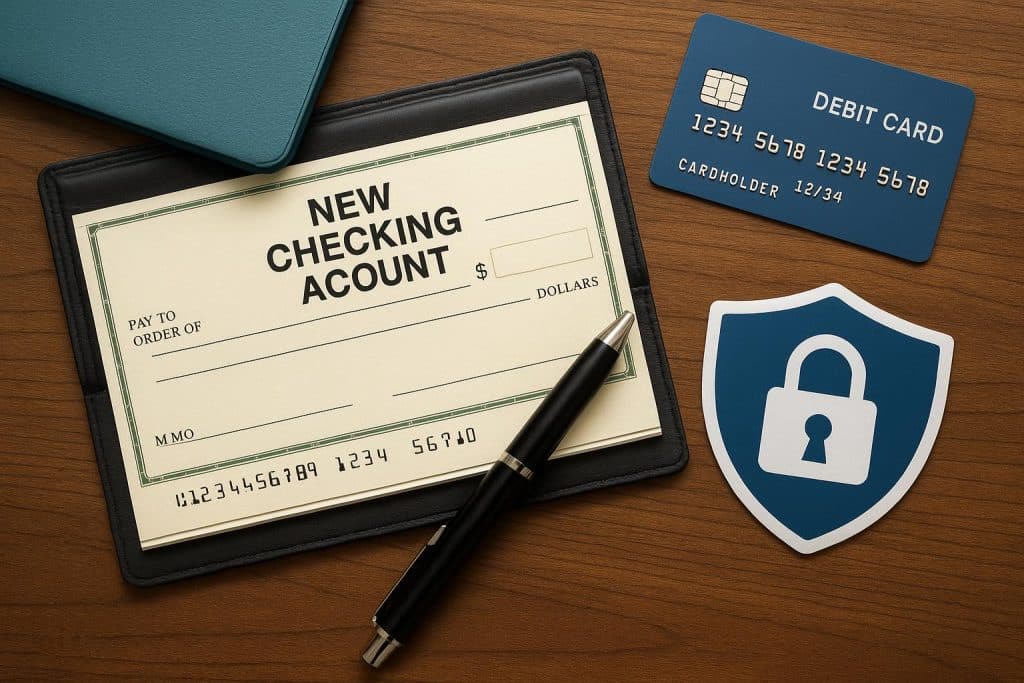If you’re about to open a checking account or already have one, don’t forget that caution is paramount. Cybercriminals are becoming increasingly effective, not only due to sophisticated technology but also because of our own negligence.
While cyberattacks cannot be stopped, vigilance and strict account monitoring can minimize the chances of them happening to you. Here’s a detailed breakdown of the common warning signs and vital tips to protect yourself from checking account fraud.
Signs of Account Fraud
Cybercriminals have various scams at their disposal. Keep a lookout for these signs that often signal an attempt by someone to access your account fraudulently:
- Discrepancies in Bank Statements: One of the first telltale signs of fraud is errors or unrecognized changes in your bank statements. If you notice deductions—sometimes, even credited amounts—that you cannot trace back to transactions you made or authorized, report them to your bank right away.
- Suspicious Communications: Scammers have become highly sophisticated and can claim to be from your bank, the government, a business you know, or even a family member. They can ask you for money and create a pressured situation, trying to convince you of the urgency. In such cases, it’s easy to feel concerned and agree to the request, but don’t respond unless you’ve checked with your bank or have any assurance that the situation is real.
- Unusual Circumstances: Fishy communications aren’t just disguised as regular money transfers. Scammers can also ask you to send cryptocurrency, wire transfers, pay via payment apps, or even purchase gift cards for them. These are common signs of fraudulent activity, and you must always steer clear of them.
- Enticing Deals: After you open your checking account, scammers can try to present exciting deals or bonuses exclusive to your account. They’ll try to compel you to take “immediate action,” indicating that it’s a limited-time offer or a one-time opportunity from the bank. Always report such activity to your bank and avoid them.
- Check Fraud Notifications: Another major sign most individuals miss is notifications from their banks about altered checks, bad checks (checks that bounce), or fraudulent checks written in their name. If you receive any communication about these, contact your bank immediately, as it may indicate a scam attempt.
- Unauthorized Access: Most banks today offer digital apps that allow you to access your checking account details. Any one-time passwords (OTPs) or login notifications from your banking app, especially when you’re not accessing it, are potential scam attempts. Always report such messages to your bank so that they can take prompt action and prevent unauthorized access to your account.
Tips on Preventing Account Fraud
- Never Share Sensitive Information: Your account number, password, login details, credit card information, and Social Security numbers are all sensitive data that can be easily compromised. Never share these with anyone except for a trusted family member.
- Read the Fine Print: As mentioned earlier, scammers often try to impersonate bank officials and present exclusive offers for your checking account. These can be anything from credit card offers to memberships, all of which are attempts to access your information or obtain money. Hence, always read the details of your account that your bank’s website mentions—account features, offers, available credit cards, transaction limits, etc. This will help you quickly identify when someone’s trying to scam you and take prompt action.
- Ensure Secure Banking Access: Although banking apps are useful, they are often among the most common methods for scams. Cybercriminals exploit weak passwords or exposed account information to gain unauthorized access and initiate transactions. As such, always ensure that you are using a strong password and log in to your account over a secure Wi-Fi network. If the app allows, set up a PIN, multi-factor authentication (MFA), or two-factor authentication (2FA) to add an extra layer of security.
- Opt for Identity Theft Protection: Scammers presenting exclusive offers and playing on your emotions is a common occurrence. Identity theft protection services ensure a robust security layer for your checking account, continuously monitoring for fraudulent activity and promptly notifying you if any concerns are detected.
Final Thoughts
As technology and our dependence on it advance, cyber threats will become even more common. Constant vigilance is integral to keep yourself safe and reduce the chances of scams happening. Always monitor your account for unfamiliar transactions or logins, access it securely, keep your account information private, and implement as many security measures as possible. If you notice suspicious activity, report it to your bank immediately to safeguard your financial health.
